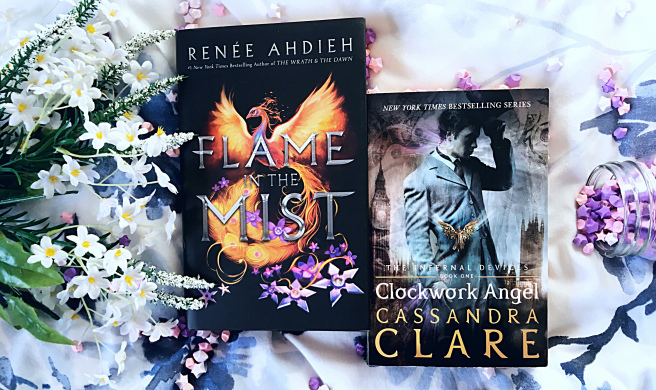by Erin Dionne
My most recent post was about writing the best story you possibly can. This one deals with another element of the revision process that I find really important: finding—and using—the “core” of your story to shape your revision.
What is the core?The core of your story is its heart. It’s the one thing that holds your book together and provides your unique perspective on the world. Without it, your book would fall apart.
Here’s an example: Think about Charlotte’s Web, by E.B. White. At the core of that book is the friendship between Charlotte and Wilbur. If you take away their friendship, you have no book—you have bacon. The Harry Potter series: the core is Harry’s desire for family. If Harry weren’t an orphan, there’d be no seven-book saga (now, each book in the series individually has its own core, too, but the overarching heart of those books is about family).
The core is the element that, without it, your book would collapse. It wouldn’t make sense. It wouldn’t have anything to offer readers. Some people may call the core the theme of the novel, and that’s one way to think about it, but I feel that a core is more visceral than a theme. And, besides, a novel may have more than one theme—but it has only one core.
How do you find it?So how do you find a core and how does it help your revision?
First, you need to take a step back (that objectivity again!) and really think about the story you’re writing. What is your story about? Not the plot, or what happens, or how the character grows…but what are you really writing about? Love in the face of loss? The connection between sisters? The dissolution of a relationship?
One way you can test to see what truly is your core: think about the elements of your story. Which one, if someone suggested taking it away, would cause that heart-clutching, soul-stabbing, gasp of “NO!”? If it hits that much of a nerve, chances are it’s close to your core.
“But Erin,” you say, “what if I don’t have that feeling about an aspect of my novel? Does it mean I don’t have a core?”
Nope. It means you haven’t identified that piece yet. Sometimes, it takes me two or three drafts before I figure out what the core of a particular book is (I usually write fewer drafts when I know what the core is from the outset, but c’est la vie). But once I’ve identified what that core is, I write it down and post it in several places: on a post-it on my laptop screen, in the notebook I keep for that particular book, on top of the pages I’ve printed when I’m revising. This keeps the heart of the book in front of me at all times.
How do you use it?Once you identify the core, you can use it to strengthen your novel. All of the other pieces of your story should act in service to the core: supporting it or challenging it. Here’s what I mean: if the core of your book is about making friends with someone who is different than you, you may want to look at scenes where people can’t connect because of their differences, as well as ones that are about building bridges.
Knowing your core can also help you decide what scenes to cut: Do you need that lengthy section that is about a family problem if your story is really focused on friendship? Perhaps it’s part of a minor plot thread and it needs to be there (like the relationship between Moxie and her mother’s boyfriend in my book Moxie and the Art of Rule Breaking). If that’s the case, trim it back. The amount of time you spend on a scene, moment, or idea signals its importance to the reader. Lots of time/page space equals loads of importance.
The core of your story gives you focus and direction, and helps craft character arc. It can also help with your ending: knowing what the heart of your story is shows you what will resonate most powerfully with your reader when your story is over (because you’ve spent so much time developing it throughout). Go back and look at the endings to Charlotte’s Web or The Deathly Hallows for reinforcement.
Finding the heart of your story may not always be easy, but I find it’s always worth it. Do you know the core of your story before you begin, or do you find it during revision? Let me know in the comments.
Next time we’ll discuss character arcs and growth.
For more information on the core of your story, check out this blog post from Maggie Stiefvater.
 Erin Dionne’s books are “Models Don’t Eat Chocolate Cookies,” “The Total Tragedy of a Girl Named Hamlet,” and “Notes from an Accidental Band Geek.” Her novel “Moxie and the Art of Rule Breaking: A 14 Day Mystery” is based on the real-life Isabella Stewart Gardner Museum art heist and was a 2014 Edgar Award finalist. The series continues with “Ollie and the Science of Treasure Hunting.” Her first picture book, “Captain’s Log: Snowbound,” will be released in 2018. She teaches at Montserrat College of Art and lives outside of Boston with her husband, two children, and a very indignant dog.
Erin Dionne’s books are “Models Don’t Eat Chocolate Cookies,” “The Total Tragedy of a Girl Named Hamlet,” and “Notes from an Accidental Band Geek.” Her novel “Moxie and the Art of Rule Breaking: A 14 Day Mystery” is based on the real-life Isabella Stewart Gardner Museum art heist and was a 2014 Edgar Award finalist. The series continues with “Ollie and the Science of Treasure Hunting.” Her first picture book, “Captain’s Log: Snowbound,” will be released in 2018. She teaches at Montserrat College of Art and lives outside of Boston with her husband, two children, and a very indignant dog.





